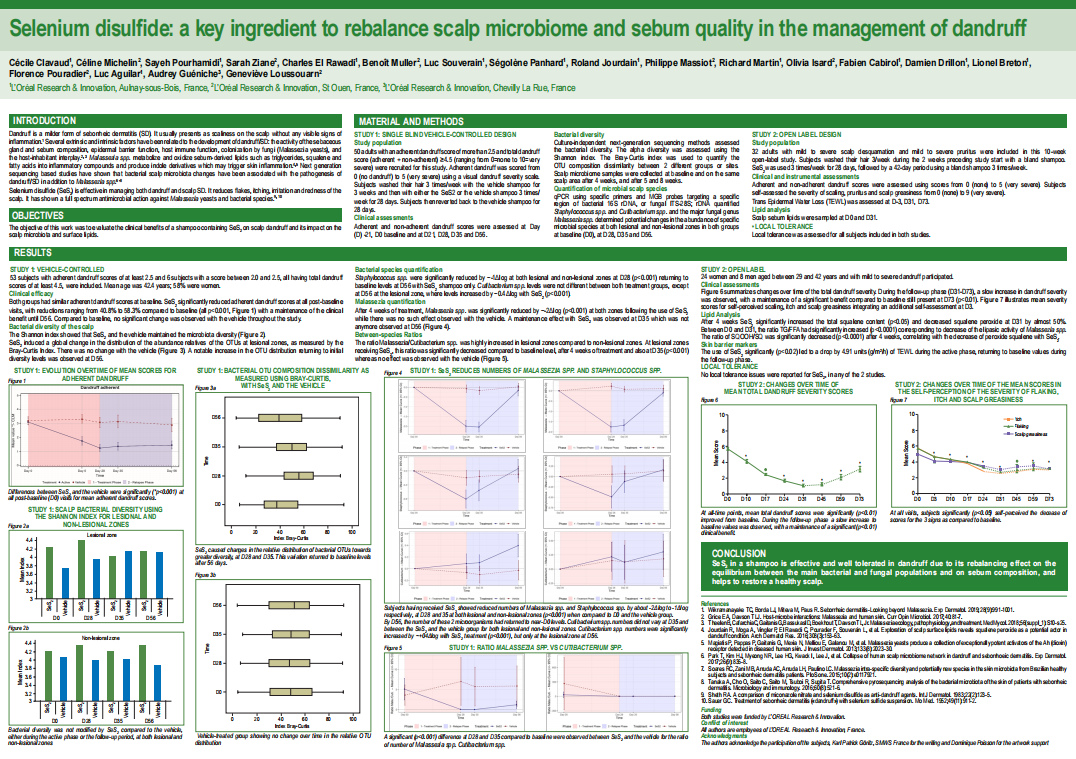
INTRODUCTION
Dandruff is a milder form of seborrheic dermatitis (SD). It usually presents as scaliness on the scalp without any visible signs of inflammation. Several extrinsic and intrinsic factors have been related to the development of dandruff/SD: the activity of the sebaceous gland and sebum composition, epidermal barrier function, host immune function, colonization by fungi (Malassezia yeasts), and the host-inhabitant interplay.
Malassezia spp. metabolize and oxidize sebum-derived lipids such as triglycerides, squalene and fatty acids into inflammatory compounds and produce indole derivatives which may trigger skin inflammation. Next generation sequencing based studies have shown that bacterial scalp microbiota changes have been associated with the pathogenesis of dandruff/SD in addition to
Malassezia spp.
Selenium disulfide (SeS) is effective in managing both dandruff and scalp SD. It reduces flakes, itching, irritation and redness of the scalp. It has shown a full spectrum antimicrobial action against Malassezia yeasts and bacterial species.









